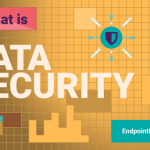
Financial institutions, as we know, have been around for centuries. Even though the way we bank has changed considerably, the basic principles remain the same. Banks have always had large amounts of personal and financial information about their customers. Today, all of that data has become easily accessible, demanding robust cybersecurity measures to protect it.
The growth of financial technology has led to many innovations and changes over the past few decades, like wire transfers, credit/debit cards, online banking, and mobile payments. Banks have had to not only upgrade their systems to accommodate these changes but also transform their processes to ensure continued security when implementing new technology. Protecting sensitive information and implementing security measures to prevent attacks carried out by cybercriminals, including phishing and malware attempts, are also essential nowadays.
Banking regulations are constantly changing according to the requirements imposed by modern banking systems. Banks have a legal responsibility to keep customer data safe and protect it from cyberattacks or unauthorized access. In this article, we will see how modern banks and financial services companies ensure that they fulfill this responsibility.
Data Security Best Practices for Banks
To secure sensitive data, banks have to follow a 360-degree approach to ensure that a data breach does not take place internally or externally. This involves securing both the customer-facing end of banking processes as well as the internal processes related to employees, vendors, and systems. Here are five tips on how to secure data in the banking industry:
1. Authentication
Authentication requires that every transaction in the bank takes place after confirming the identity of the person initiating the transaction. This applies to customers logging in to online or mobile banking systems, to those visiting the bank in person, or to those using credit/debit cards at POS terminals and ATMs. It also applies to bank employees who have access to customers’ and banks’ data. While earlier authentication simply required an ID and a password or PIN, many banks have now implemented two-factor and multi-factor authentication to ensure that the person is actually who they claim to be. Banks are also using biometric authentication techniques to verify customers’ identity, including behavioral biometrics when they interact with banking systems like Interactive Voice Response (IVR). This is a crucial part of the bank’s overall information security strategy.
2. Audit Trails
A history of banking transactions was always available as a statement or passbook. Additionally, banking systems also maintain an audit trail for every event that takes place during a customer’s interaction with the systems. This is crucial for quickly responding to incidents, including a security breach or ransomware attack. Whether it is a customer using phone banking or online banking, the time of the interaction is recorded along with the details of the interaction. This data is backed up daily and is never purged completely but archived at defined time intervals. Part of the audit trails includes maintaining a response plan for security incidents.
3. Secure Infrastructure
Secure infrastructure involves the database systems and servers where data is stored as well as the boundaries established to secure these. Production data is usually encrypted in any core banking system. Access to production systems is restricted, with only authorized providers handling critical infrastructure. Effective access management is key to securing these databases. If required for testing, important data like bank account number, customer name, and address must be masked. Vendors who deal with infrastructure are generally different from those who deal with applications. Bank employees are usually given special equipment where access to social websites, personal emails, and USB ports are blocked. Employees can only access the banks’ network over a VPN when using public WiFi.
4. Secure Processes
Banks have established many processes to ensure that security is implemented and tested. For example, the Know Your Customer (KYC) updates for customers, Non-disclosure agreements (NDA) for employees and vendors, and securing special zones within the premises and remote data centers.
With Data Loss Prevention (DLP) solutions, banks can mitigate insider threats and safeguard customers’ personal data like names and credit card numbers. These solutions can also help meet regulatory compliance requirements of data protection regulations such as PCI DSS and GDPR, thus ensuring that a bank’s security meets consensus standards and keeps its customers’ information secure.
Processes related to global and local regulations are also implemented, and risk assessments are carried out to ensure that these processes are in line with the requirements.
5. Continuous Communication
Banks also communicate regularly with consumers on upgrades to systems, the introduction of new authentication procedures, etc., in addition to the periodic account statements that are generated and sent to customers. Customers can also set limits and alerts based on different conditions to ensure that they are informed if any unexpected activity takes place concerning their accounts. While there are multiple channels of communication available, the set-up is flexible to cater to customers’ convenience.
Strengthening Data Security with Endpoint Protector
Following these five tips ensures that your bank’s personal and financial data remain secure. Deploying various security solutions to safeguard customer data is also critical. DLP solutions like Endpoint Protector by CoSoSys provide a comprehensive solution tailored to meet the unique challenges faced by the banking industry as well as the broader financial sector.
Endpoint Protector helps to prevent operational disruptions, regulatory issues, penalties, and reputational damage that result from data breaches at the endpoint. Protecting sensitive data such as customer PII and payment information, Endpoint Protector continuously monitors and controls how information is being used to reduce the risk of insider threats and data loss from malicious, negligent, and compromised users.
One of the standout features of Endpoint Protector is its advanced Optical Character Recognition (OCR) capabilities. This technology enables banks to accurately scan and monitor a wide range of file types found in images and scanned documents. It’s particularly useful for detecting sensitive information in formats that server-based OCR solutions might overlook, ensuring comprehensive data protection and aiding in compliance with financial regulations.
Meet your compliance obligations, including GDPR, CCPA, PCI DSS, GLBA, and more, and maintain control over your employee endpoints – even when they’re working remotely or offline.
Frequently Asked Questions
Banks have always been at the forefront of enterprise cybersecurity. Due to the large amount of customer data they handle and their financial assets, banks are natural targets for both cybercriminals and malicious internal actors. They are not only a prime target for cyberattacks but are also among the most heavily regulated organizations when it comes to data protection, risking both high fines and a loss of reputation in case of a data breach.
Find out more about Data Loss Prevention for Financial Institutions.
Besides securing data against external threats, banks must also take into account obvious internal vulnerabilities linked to business operations. When looking to protect sensitive information, banking and financial services should also consider the following:
- Protecting data in motion
- Mitigating internal threats
- Having a response plan.
Learn more about data protection for banking and financial services
Sensitive data is information that is required to be protected from unauthorized access. The three main types of sensitive information are:
- personal information such as name or bank account number;
- business information such as intellectual property or trade secrets;
- classified information that refers to data that belongs to the federal government and relates to sensitive topics such as military plans.
A comprehensive Data Loss Prevention (DLP) solution is an essential tool in protecting sensitive company and customer information regardless of where data resides, as well as in monitoring and preventing confidential data from leaving the internal environment of a bank. Apart from providing solutions to prevent internal and external threats, DLP solutions help banks in complying with regulations such as PCI DSS, NIST 800-171, GDPR, etc. DLP tools can safeguard banks’ sensitive data by:
- Offering control over USB and peripheral ports;
- Protecting sensitive data in motion;
- Encrypting confidential data;
- Scanning sensitive data at rest
Download our free ebook on
Data Loss Prevention Best Practices
Helping IT Managers, IT Administrators and data security staff understand the concept and purpose of DLP and how to easily implement it.
















